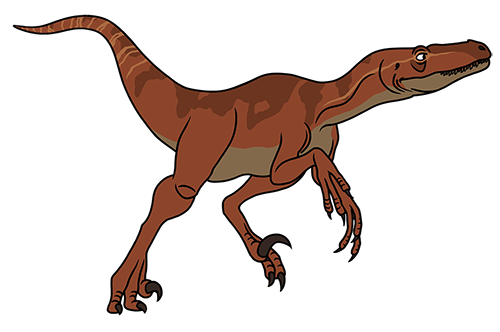Deinonychus
#14
by Kyle Morris on October 12, 2021Named in 1969 by John Ostrom, this animal’s name means “terrible claw,” which refers to the large claw on the inner toes.

Artist Rendering of Deinonychus
The first remains were potentially discovered in 1931 by paleontologist Barnum Brown, though he was too preoccupied with another nearby Tenontosaurus (a large iguanodontid) to pay it much attention. Later, in 1964, John Ostrom led a more conclusive excavation that would lead to a better understanding of the animal.
Deinonychus stood at about 3–4 feet tall, weighed up to 100 pounds or more, and reached lengths of up to 10 feet. It was a carnivorous theropod believed by many to have hunted in packs, although paleontologists dispute this.
Deinonychus is considered a raptor, a term that comes from shortening the genus name of the Velociraptor. It is an unofficial term referring to some dromaeosaurs. Examples include Velociraptor, Utahraptor, Dromaeosaurus, and Deinonychus, among others.
Did you know that the Velociraptors in the Jurassic Park franchise are based on the Velociraptor’s and Deinonychus’ larger cousin, the Utahraptor? Real-life Velociraptors are found in Mongolia, less than half the size of the ones in the films. The raptors are depicted as the size of a Utahraptor and are shown to be found in Montana in the movies, which is near where the real-world Utahraptor is located. Can you guess where? You guessed it, Utah!
October is “dinosaur month!” Every weekday of this month, you can come back to our Kids site to read about my 20 favorite dinosaurs. I hope you’ll join me!
- © 2024 Answers in Genesis
- Privacy Policy
- Contact
- About
